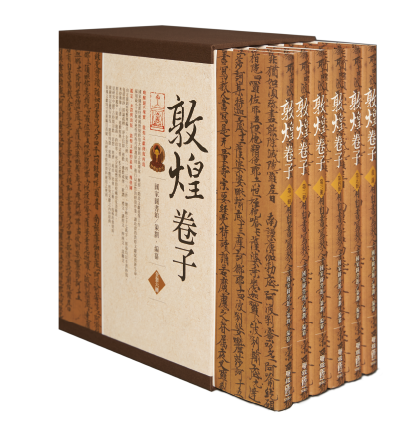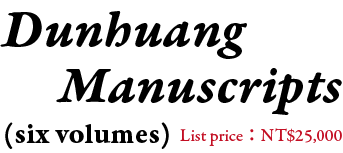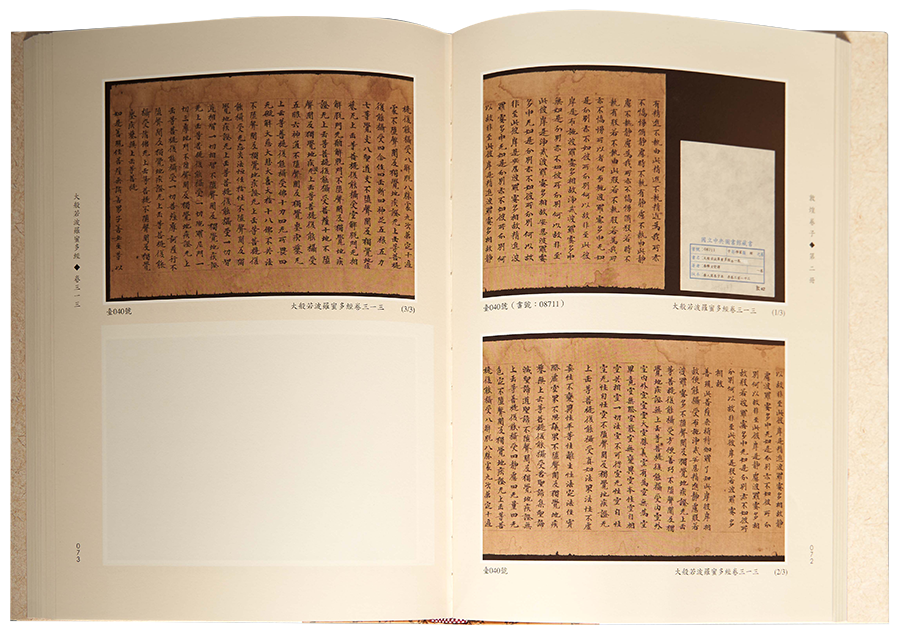




Spanning a period beginning with the Eastern Jin dynasty (317–420) and ending with the early years of the Northern Song dynasty (960–1127), the collection consists mainly of Chinese Buddhist scriptures, along with three Daoist texts and three Buddhist scriptures written in Tibetan. Many of these texts are unique to this collection.
After being partially restored by experts using the latest low-impact, reversible techniques,this collection of Dunhuang manuscripts has gained a new lease on life, and for the first time has been published in a complete color edition.



- Dunhuang Manuscripts consists of six volumes reproducing some 77,000 hand-written characters.
The manuscripts in this collection cover a wide range of subjects, including Pure Land Buddhism, esoteric Buddhism, Buddhist monastic discipline, hymns, liturgies, sermons, opening verses, apotropaic verses, woodblock prints, line drawings, Daoist scriptures, government documents, and personal letters. - Each manuscript is preceded by a detailed scholarly introduction, greatly enhancing the value this collection has for the study of the religion, thought, economics, politics, culture, history, and art of medieval China.


1. Significance for antiquities research
Spanning a period beginning with the Eastern Jin dynasty (317–420) and ending in the early years of the Northern Song dynasty (960–1127), the 206 manuscripts in this collection display a wide range of papers, bindings, epigraphs, seals, and marginal notes.
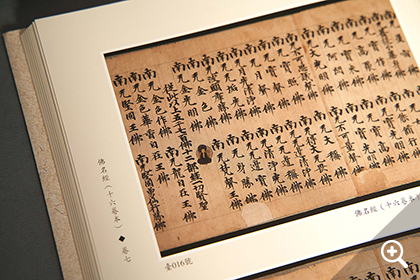
2. Significance for paleography
Included in Dunhuang Manuscripts are 19 texts unique to this collection, including Daoist texts, vinaya texts of the early Buddhist schools, fragmentary texts of the three stages school of Buddhism, and Chan texts, none of which have been previously studied by modern scholars.


2. Significance for paleography
Included in Dunhuang Manuscripts are 19 texts unique to this collection, including Daoist texts, vinaya texts of the early Buddhist schools, fragmentary texts of the three stages school of Buddhism, and Chan texts, none of which have been previously studied by modern scholars.
3. Significance for grammatology
The collection provides a wealth of information on the evolution of Chinese characters during the medieval period.
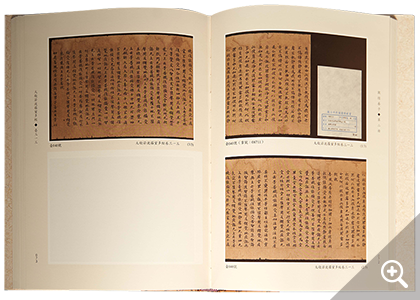
4. Significance for calligraphy in Japan
The collection also includes a number of Japanese manuscripts from around the same period, providing valuable material for studying the evolution of Japanese calligraphy.
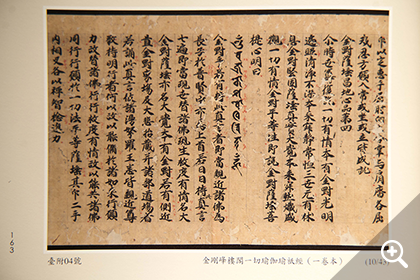

4. Significance for calligraphy in Japan
The collection also includes a number of Japanese manuscripts from around the same period, providing valuable material for studying the evolution of Japanese calligraphy.


Since being founded in Nanjing in 1933, one of the primary missions of the National Central Library has been the collection of original editions of ancient Chinese texts. By the late 1930s, however, in the wake of the Japanese occupation of eastern China, the Library was relocated to Chongqing, and in 1940–1941 the Rare Book Preservation Society managed to acquire a large number of rare books and manuscripts for the Library, which otherwise might have fallen into Japanese hands. Since being reestablished in Taipei, the Library has continued to expand its collection of rare books, which currently consists of 12,922 works in 135,478 volumes. Consisting of some 200 items, the Library’s collection of Dunhuang manuscripts, most of them purchased during the 1940s, is the largest such national collection in Taiwan.
Thanks to the daring efforts of the philologists and antiquarians working with the Rare Book Preservation Society, a large number of valuable books and manuscripts in the Japanese-occupied Jiangnan region of east-central China were acquired for the Library. The 4,864 works in some 48,000 volumes collected by the Society became the basis of the Library’s rare book collection.



